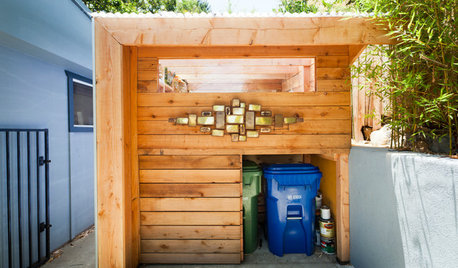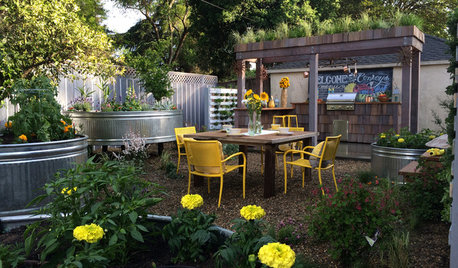Bins for Rabbits, Coffee, and Worms
lesellers
13 years ago
Related Stories

GARDENING GUIDESHouzz TV: Make a Worm Bin for Rich Soil and Happy Plants
A worm-powered compost bin that can fit under a sink turns food scraps into a powerful amendment for your garden. Here’s how to make one
Full Story
CURB APPEALHouzz Call: How Do You Hide Your Trash?
No one wants to see those trash and recycling bins. So where do you stash them while you wait for the garbage truck? Show us your designs!
Full Story
ORGANIZINGHelp for Whittling Down the Photo Pile
Consider these 6 points your personal pare-down assistant, making organizing your photo collection easier
Full Story
GARDENING GUIDESGet on a Composting Kick (Hello, Free Fertilizer!)
Quit shelling out for pricey substitutes that aren’t even as good. Here’s how to give your soil the best while lightening your trash load
Full Story
EDIBLE GARDENSHow to Grow Your Own Sweet Summer Crops
This guide will help any gardener get started on growing the freshest warm-season veggies and berries for summer
Full Story
FARM YOUR YARDHow to Grow Vegetables in Containers
Get glorious vegetables and fruits on your patio with a pro’s guidance — including his personal recipe for potting mix
Full Story
HEALTHY HOME6 Tips From a Nearly Zero-Waste Home
Lower your trash output and increase your quality of life with these ideas from a mom who did it to the max
Full Story
FARM YOUR YARDRemake Your Backyard Into a Mini Farm
You can get a taste of country life by line-drying your laundry, growing some produce or going whole hog with the critters
Full Story
HOUSEKEEPINGHow to Fix a Stinky Garbage Disposal
No plumber’s fee or even a trip to the hardware store is required with these easy solutions
Full Story
PETSPet-Proofing Your Home: A Room-by-Room Guide
Not all pet dangers are obvious. Keep furry friends safe and sound by handling all of these potential hazards
Full StorySponsored



susanfromhawaii
lesellersOriginal Author
Related Discussions
Worms not migrating from Bin-1 to Bin-2
Q
Some Advice on Coffee Grounds in Worm Bins
Q
Chicken or rabbit manure harmful to worms?
Q
worm bin sos? (and, do i have aliens in my worm bin, or bsf?)
Q
susanfromhawaii
lesellersOriginal Author
curt_grow
susanfromhawaii
pjames
lesellersOriginal Author
papa76302
equinoxequinox
lesellersOriginal Author
susanfromhawaii
moandtg
lesellersOriginal Author
Jonparrco_gmail_com
equinoxequinox
equinoxequinox
JPizzle
equinoxequinox
seeker2be
patrick1969
TravelingBiker